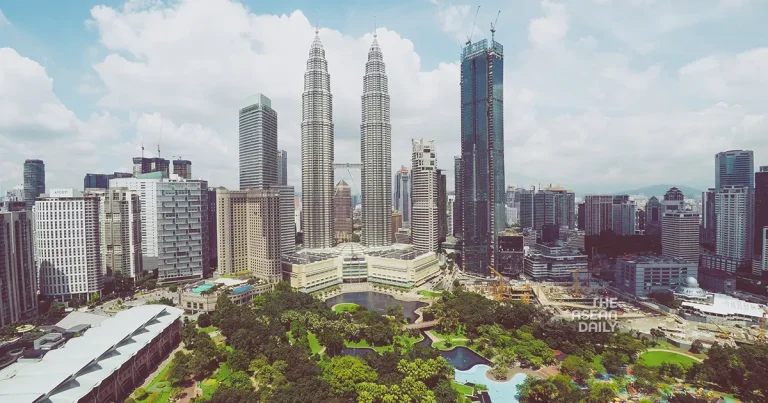24-9-2023 (KUALA LUMPUR) Being among the wealthiest 1 percent in Malaysia doesn’t require astronomical riches, unlike some of the world’s most affluent nations. In a recent report by property consultancy Knight Frank, it was revealed that the entry point to the top 1 percent club of Malaysia’s richest individuals was as low as US$485,000 in net wealth last year. This contrasts sharply with countries like Monaco, where the threshold is a staggering US$12.4 million, Switzerland at US$6.6 million, or Singapore at US$3.5 million.
While the report doesn’t specify the number of individuals in Malaysia who meet this US$485,000 threshold to be among the top 1 percent, it does indicate that Malaysia had 85,126 high net worth individuals (with a net worth of at least US$1 million) in 2022. Additionally, there were 721 ultra-rich individuals, each possessing a net worth exceeding US$30 million. This combined data suggests that Malaysia had a minimum of 85,847 individuals in its top 1 percent category last year. Projections from Knight Frank’s Wealth Sizing Model indicate that this number will nearly double to 165,883 by 2027, comprising 164,839 high net worth individuals and 1,044 ultra-high net worth individuals.
This presents an opportunity for Malaysia, which is striving to position itself as a premier destination for wealthy investors. It is also significant for Malaysian Prime Minister Anwar Ibrahim, who has prioritized strengthening the economy as a key focus.
Malaysia’s pursuit of affluent investors is part of a broader global competition among nations to attract foreign capital and talent. In 2022, global foreign direct investment (FDI) flows reached US$1.3 trillion. For Malaysia, FDI accounted for 61.7 percent of total approved investments in the country last year, amounting to RM163.3 billion (US$34.8 billion). The infusion of wealth and capital from affluent investors can have a transformative impact on Malaysia’s economy, bringing not only financial resources but also expertise, networks, and connections that can stimulate local industries.
One of the primary strategies employed by Malaysia to attract overseas retirees and wealthy investors is the Malaysia My Second Home programme (MM2H). Launched in 2002, this programme grants eligible participants a multiple-entry social visit pass, allowing them to stay in Malaysia for up to 10 years, with the option of renewal. Between 2002 and 2019, nearly 50,000 foreigners were approved under the MM2H programme.
However, in a surprising move, the government introduced more stringent requirements in 2021, leading to a significant drop in the number of applicants. These requirements included quadrupling the minimum monthly income to RM40,000, increasing the required period for physical presence to 90 days in a year, a new bank deposit requirement of RM1 million (up from the previous amount of RM150,000 to RM300,000), and liquid assets of RM1.5 million (up from RM350,000 to RM500,000).
It may seem perplexing that a country seeking to attract wealthy investors would raise its thresholds, positioning itself as less competitive than neighboring nations. Calls from various quarters have urged the Malaysian government to ease the MM2H regulations, with the Johor Sultan making multiple appeals for the government to revise the criteria. In April, the government confirmed that it would review the programme’s criteria.
Malaysia may aim to distinguish itself as a superior destination by offering higher-level facilities, and thus, it may have chosen to position itself with a higher price point. However, this approach may misjudge the market’s dynamics. Attracting affluent foreigners has a ripple effect on various sectors, including housing, medical services, and local industries. Higher-end investment can stimulate the construction industry and boost the property sector. Moreover, overall consumption tends to rise, as affluent consumers splurge on goods and services.
In line with its FDI policy, which targets technologically sophisticated investments and top talent, the second home policy primarily caters to the upper echelons of the expatriate market. The government’s primary objective is not diversity but economic benefits. Such policies cater to those who have the means to create a market for exclusive commodities, luxury condominiums, and high-end hospitals reminiscent of hotels.
There are various segments of foreigners interested in making Malaysia their second home, including retirees, holiday home seekers, property investors, and those seeking refuge from challenges in their home countries. While Malaysia previously attracted retired Japanese citizens, the focus has shifted to the Chinese in recent years. The robust Chinese economy makes it an attractive source of wealthy investors looking to diversify their property investments abroad.
One development negatively impacted by these policy changes is the 1,370-hectare Forest City mega-project in southern Johor state, built by Chinese developer Country Garden. Originally part of the Belt and Road Initiative, the project has languished with only 15 percent completion after eight years of construction work. Despite having 28,000 completed residential units, only 9,000 people live in Forest City.
In an effort to reignite interest in the project, Prime Minister Anwar announced that Forest City would be designated as a special financial zone, offering tax incentives and multiple entry visas.
Malaysia’s attractiveness to foreigners will largely depend on the government’s focus. While China’s growing wealthy elite was previously a focal point, its slowing economy could impact Chinese investments, particularly among retirees deterred by higher deposit requirements.
In 2019, Malaysia could boast the highest number of applicants for its residence-by-investment programme. However, times have changed, and the second home programme must adapt to shifting dynamics.




